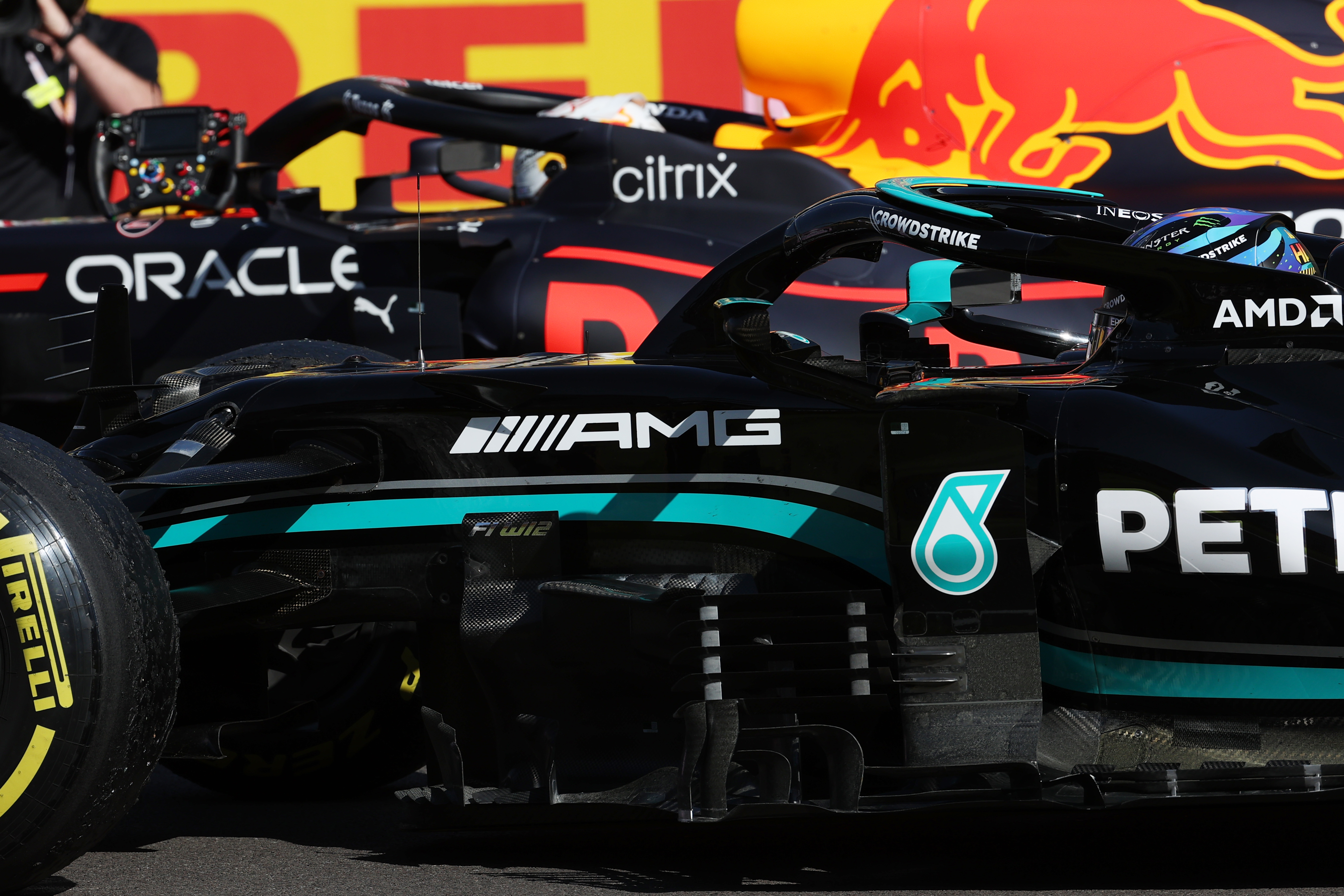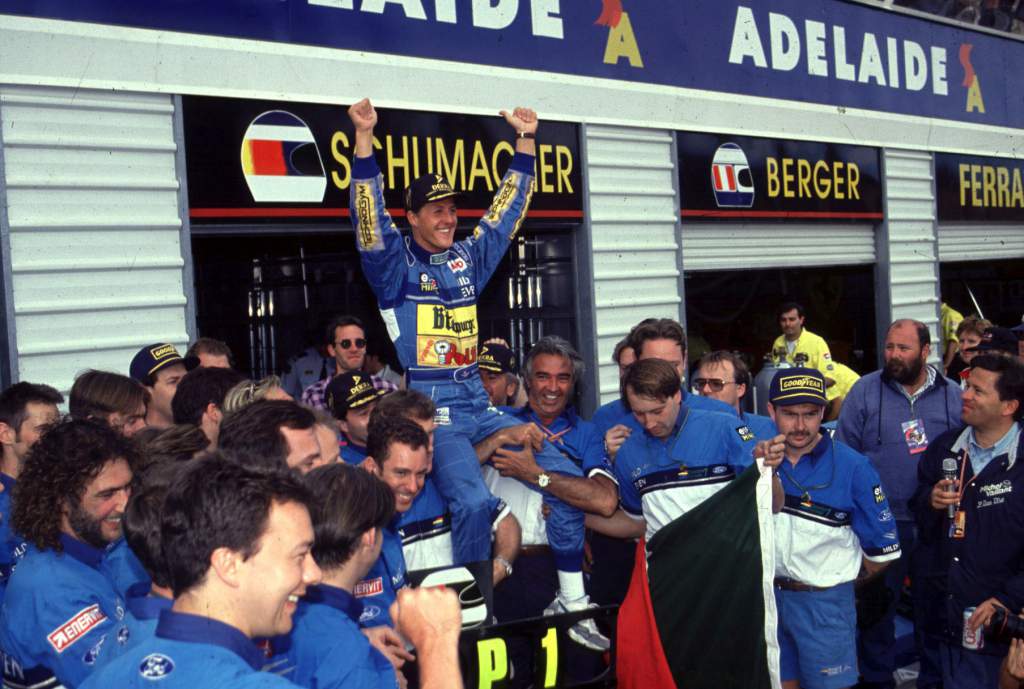Up Next

Allow yourself to see five months forward into a hypothetical future, and imagine the following: Lewis Hamilton and Max Verstappen remain neck and neck in the title battle and enter a winner-takes-all title decider in Abu Dhabi.
Let’s say Hamilton wins it. Let’s say his final gap over Verstappen is 10 points. How long will it take for the Silverstone accident to come up, and for those of a Verstappen-favouring persuasion to seek to add an asterisk to what would be a record-breaking Hamilton title?
Ignoring the point for fastest lap, the British GP collision represented a change of either 18 points (if we suppose Hamilton would’ve gone on to win, but Verstappen stayed second and dropped just seven points relative to Hamilton instead of 25) or 32 points (if we suppose Verstappen would’ve held on and outscored Hamilton by an extra seven) in the title battle, in the reigning champion’s favour.
Yes, there has been only one season in the hybrid era where that kind of swing will have been decisive – but in the context of the current close battle, it is a whole heap of points.
And though Hamilton’s fault was by no means universally acknowledged, the stewards did rule it was the Briton who failed to “avoid contact” and deemed him predominantly at fault.

Let’s presume for a second that you agree with the stewards. If you don’t – if you think it was a racing incident that Verstappen simply came off worse in – then there’s obviously no issue, and no miscarriage of justice has taken place.
But if the stewards’ verdict strikes true, then the outcome has to be an uncomfortable one. Hamilton drove his heart out afterwards and his win was brilliant, especially compared to Valtteri Bottas’s struggles in overtaking, but he goes down as the big beneficiary of an act he was penalised for. And it’s something that could help decide the championship down the line.
There are at least three very famous examples of something like this in F1, although in none of the three was the effective beneficiary penalised by the stewards. The first two are the Alain Prost/Ayrton Senna Suzuka collisions of 1989/1990, both so famous and yet neither creating an obvious change in the championship outcome – but rather just allowing the title to be sealed with a race to spare by the person who looked most likely to win it anyway.
But the 1994 controversy was one where the fate of the title was indeed probably changed. Had Damon Hill got past the hobbled Benetton of Michael Schumacher instead of being speared off in Adelaide, it would’ve been his title to lose.
Their collision was deemed a racing incident in the moment, and some will defend Schumacher’s driving still, but my perception is that – much like with Senna’s deeply cynical 1990 move – history does not view it very kindly.
That said, Schumacher’s 1994 triumph is largely accepted by history. Nobody goes around calling him a six-time champion, and if 1994 does get dubbed an ‘asterisk’ title, it’s usually more to do with theories regarding the car’s legality.
Perhaps it’s because Schumacher and Benneton were widely seen as the better package over the year, and because many saw the Schumacher two-race ban that set up the title showdown in the first place as unconvincing. Perhaps it’s because Hill didn’t retire without a title in the end. Perhaps it’s because time heals all wounds.

But it is interesting to mull over what sanction Schumacher would’ve received if he were deemed guilty. Drivethrough? Disqualified? He was out of the race, neither was an option. Race ban for 1995? Still champion (and still champion in 1995 given his margin that season).
Perhaps we got our answer with Jerez 1997, where Schumacher lost his second place in the championship because of his attempt to take title rival Jacques Villeneuve out of the decider.
None of which is to say that Hamilton’s Silverstone move is anywhere near the same league, or even the same galaxy, as Jerez ’97, Adelaide ’94 or Suzuka ’90. It is patently not.
But does it expose a shortcoming of the F1 penalty system? If a driver has a rival off, should they have the opportunity to outscore said rival in that same race? Or should they be parked?
In modern F1 terms, that was not a black flag-worthy move from Hamilton under any stretch. And the FIA stewards make it a specific goal to judge the move rather than the consequence. As a philosophy, that’s not only understandable but broadly, intuitively correct – but it can lead to a somewhat sour taste, like this Sunday.
But what helps, ultimately, is that there’s still so much of the season left.
Sure, maybe Hamilton will win the contest by a narrow margin and Verstappen and Red Bull would then seek to add an asterisk. There’s no indication they would, but there’s a very recent example of that in F1’s two-wheeled counterpart. Valentino Rossi, after all, still speaks openly and assuredly of feeling robbed of the 2015 MotoGP title – by champion Jorge Lorenzo but also alleged ‘co-conspirator’ Marc Marquez.
But that saga reached its peak in the final rounds. In F1, so did 1997, and 1994, and 1990, and 1989.
And when you look back to the most recent DNF-causing collision between title rivals, you get Spain 2016. That was a clash that Nico Rosberg could reasonably (though by no means overwhelmingly) be blamed for, given it was he who was in the wrong engine mode.
If he’d opened the door to Hamilton instead of defending, it would’ve been a seven-point swing in Hamilton’s favour, which would’ve theoretically made him 2016 champion.
Absolutely nobody sees it like that, because it was so early in the season and because it was completely overshadowed as the event of the season by Hamilton’s Sepang engine blowout.
Chances are good that here too, with more than half the season left to run, there will be another event that goes on to define this title battle.







